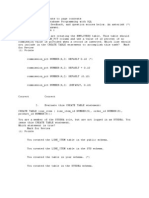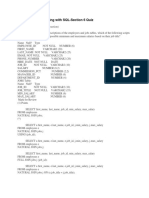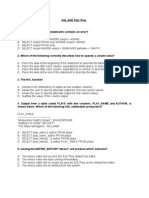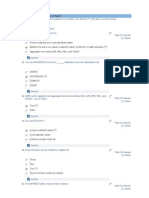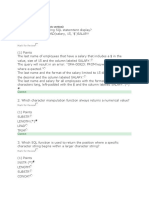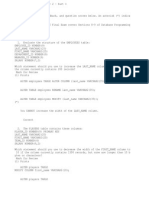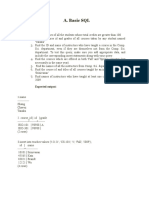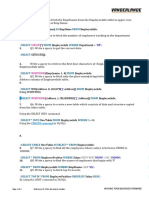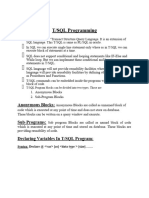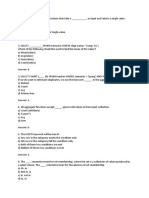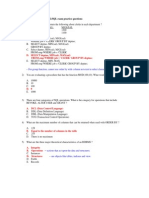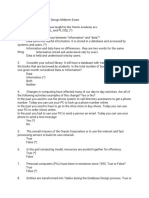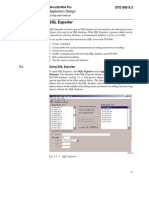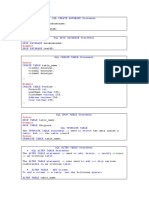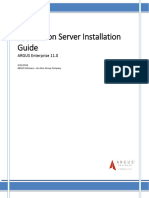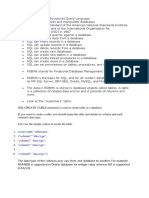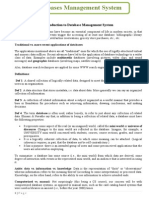0% found this document useful (0 votes)
304 views11 pagesDatabase Programming Section 16 Quiz
1. The document is a 15 question quiz about database programming concepts like sequences, indexes, and synonyms.
2. Common multiple choice questions ask about the purpose of sequences, pseudocolumns that return sequence values, and SQL statements used to create, alter, and drop sequences and indexes.
3. True/False and short answer questions cover topics like when indexes can improve query performance, the correct syntax for creating synonyms, and how to create an index to speed up a query with a function in the WHERE clause.
Uploaded by
José Obeniel LópezCopyright
© © All Rights Reserved
We take content rights seriously. If you suspect this is your content, claim it here.
Available Formats
Download as PDF, TXT or read online on Scribd
0% found this document useful (0 votes)
304 views11 pagesDatabase Programming Section 16 Quiz
1. The document is a 15 question quiz about database programming concepts like sequences, indexes, and synonyms.
2. Common multiple choice questions ask about the purpose of sequences, pseudocolumns that return sequence values, and SQL statements used to create, alter, and drop sequences and indexes.
3. True/False and short answer questions cover topics like when indexes can improve query performance, the correct syntax for creating synonyms, and how to create an index to speed up a query with a function in the WHERE clause.
Uploaded by
José Obeniel LópezCopyright
© © All Rights Reserved
We take content rights seriously. If you suspect this is your content, claim it here.
Available Formats
Download as PDF, TXT or read online on Scribd
/ 11


